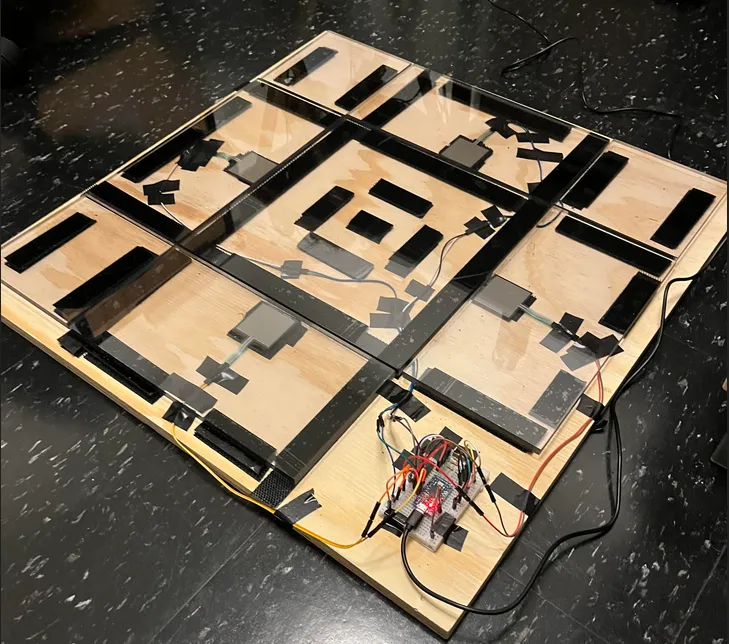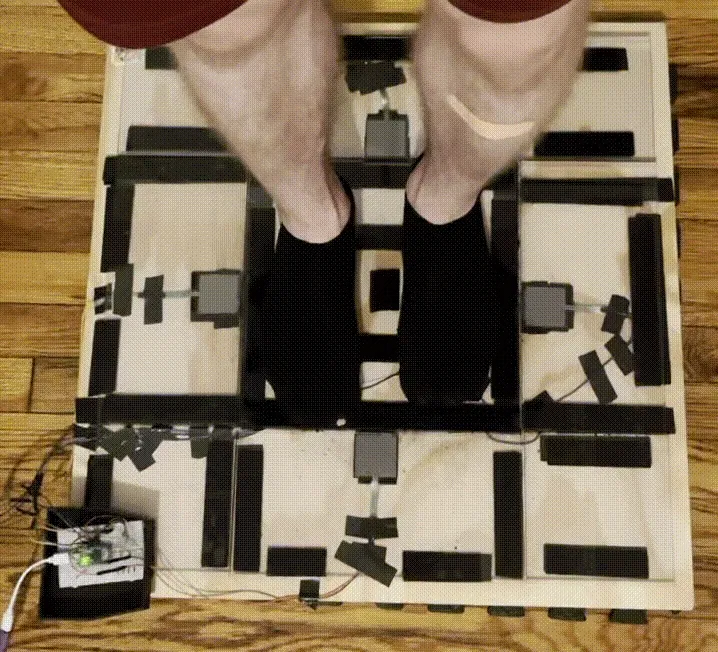Fully Custom Pedals with Talon Voice
All code mentioned in this article can be found here
An Intro
For the past three years I’ve been doing the majority of my computer input all with Talon Voice. Out of all the features in Talon, I believe that foot pedals are some of the most underutilized and most powerful. After all, they
- have a natural and tactile feel with clear on and off states
- are ideal for tasks like scrolling
- eliminate repetitive voice commands or hotkeys
- improve productivity with a body part that is normally unused
- allow for variable length inputs when held down
Then by using foot pedals specifically alongside Talon we now have:
- contextual function overrides based on the current application
- a system that runs out of the box on Linux, Mac and Windows
- our entire accessibility stack integrated and easily sharing state if necessary
- we can use our foot pedal to toggle our eye tracker or modify our voice commands
All code described in this article can be used with your own Talon setup, almost no configuration needed!
Motivation
Optimizing your foot pedal set up isn’t as easy as it sounds. From a hardware standpoint, many pedals are poorly designed and require excessive force to activate. It’s not uncommon to hear stories of Talon users who purchase a pedal but end up overusing it and developing repetitive strain injury in their feet.
On the software side, operating systems generally don’t handle processing multiple keys together without modifiers (e.g., shift, control). As a result, if we want to have a cross platform pedal that can handle have multiple key presses at the same time, we need to utilize Talon’s cron library to process a state dictionary in parallel, creating the illusion of simultaneous key presses.
By utilizing multiple key presses, we can transform a pedal with 3 switches into a device with 7 separate actions. Additionally, by incorporating special actions for specific length presses, we can add another 3 actions. Finally, when we introduce contextual overriding, the potential for actions becomes virtually infinite.
Software Overview
If you remap your pedal or foot switch to the proper keys as defined in the talon frontend you should be able to use my code right out of the box without any configuration. If you look inside my overrides folder, you can see the variety of custom actions that are overridden contextually. For instance, by default the west and east direction pedals scroll up and down respectively, but if I am watching a YouTube video they control the volume.
Technical Note: If you are not interested in multiple key presses at the same time, or custom hardware, you could do this entirely in a simple .talon file, using a pedal that is natively supported in Talon like the Elgato Stream Deck. However, my solution has more options for customization
Technical Explanation
Talon has the ability to capture and operate upon key presses. A .talon file is used as a frontend by which the backend state dictionary is updated. By binding each pedal as a hotkey with a key that is rarely used like numlock, we can capture input without needing a special joystick library.
Most nicer pedals like the Kinesis Savant or the Olympus footswitch can remap keys at the hardware level so we don’t need any extra software. Additionally by using normal keys, once we progress to custom pedals, we don’t need access to the Arduino joystick library and can use a wider variety of microcontrollers.
Once we have the proper mapping, we can easily capture the key and send it to Python.
key(keypad_divide:down):
user.pedal_down('north')
key(keypad_divide:up):
user.pedal_up('north')After pressing down the key, an internal state dictionary is then updated. By using Talon we can do more complex custom behavior beyond just a simple hotkey. The abridged code below shows an example of default functionality:
@mod.action_class
class Actions:
...
def north_up():
"""Toggles Talon by Default"""
actions.user.toggle_sleep_mode()
def north_held():
"""Triggered when the pedal is held for five seconds"""
actions.user.toggle_full_screen()
Then if the context matches then it will override the default north_up and north_held function (along with all the other pedal functions not included here for brevity).
ctx = Context()
ctx.matches = """title: /YouTube/
title: /Vimeo/
"""
@ctx.action_class("user")
class Actions:
...
def north_up():
"""Pauses a Video Player Using a Keyboard Shortcut"""
actions.key("space")
def north_held():
"""Triggered when the pedal is held for five seconds"""
actions.user.draft_comment()
Because of the fact that we are using an internal state dictionary, our north pedal can have multiple actions associated with it depending on the length of the press, the state of other pedals, or any other desired modifier.
Custom Hardware
DanceDanceRevolution is one of the few games I have played that is intended to be played with hands-free-input and still feels natural while doing so. By leveraging some of the design decisions used for the game and building around natural movements, we can create a foot pedal (in reality more like a pad) that is more ergonomic and less likely to cause repetitive strain injury.

Using force-sensitive resistors, we are able to activate the press with as much movement as we want. We can simply shift our weight onto it and make small movements such as pivoting our ankles or standing on our toes. However, we can also make full stomp-like movements, as if we are walking in place.
These types of movements make the design ideal for use at a standing desk. Additionally, since there is no need for ankle hinges and more movement options, there is a lower risk of developing RSI around the ankle or foot (the type of which you might get driving a car for a long period of time).

While this may not seem significant for occasional pedal usage, it is crucial to optimize the design for individuals who press pedals hundreds of times a day at their desks.
Design Decisions
If you are familiar with this type of input method, it is likely that you have encountered either a large metal arcade pad or a flimsy, foldable soft pad for home console use.
My design uses a wood base with polycarbonate mounted by velcro. The slight compression of the velcro provides tactile feedback while still securely keeping the sensor in place. As such, my design is considerably more portable than a large metal pad, while still providing enough durability for use at a standing desk with shoes.
For those who prefer using the panel barefoot, there is a slight lip near the sensor’s edge that allows you to easily feel the edge of the panel with your feet without looking down.
Conclusion
Foot pedals and experimental input methods are not discussed nearly enough and there is so much potential for improvement. In the future, I would be interested in designing a larger pedal/pad and developing input methods that incorporate a wider ranger of natural movement. What if we could use our entire body to control the computer? With alternative input methods it’s possible, it’s only up to us to reimagine it.
Beyond just my pedal, I believe strongly that custom hardware is one of the best ways to tailor Talon your needs and experiment with previously unseen input options. Regardless of your current health or abilities, anyone who uses computers for a significant portion of their day with only a small subset of input methods is at risk for RSI or other related health issues.
Thus, when we create these sorts of custom devices and leverage accessibility software like Talon Voice, we are not only optimizing our productivity, but also our health. I’m really excited about these ways we can turn computer use into a healthier, more accessible activity and I intend on building more custom hardware in the future.
If you or someone you know could benefit from personalized sessions for learning Talon and optimizing a personal setup in either hardware or software, please feel free to reach out to me. I’d love to help you get your workflow to the next level.